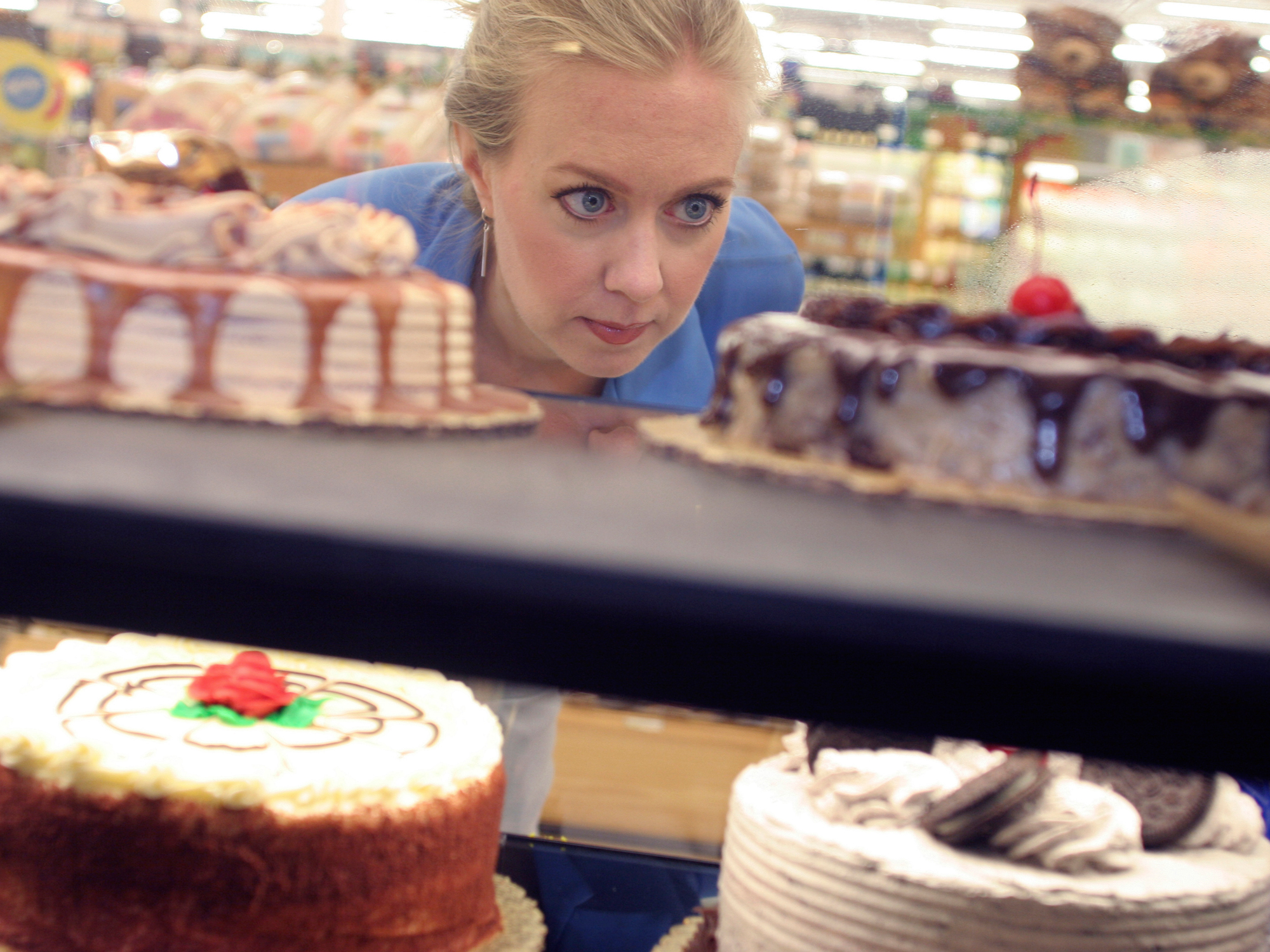Get Easy Health Digest™ in your inbox and don’t miss a thing when you subscribe today. Plus, get the free bonus report, Mother Nature’s Tips, Tricks and Remedies for Cholesterol, Blood Pressure & Blood Sugar as my way of saying welcome to the community!
The food trap that keeps you dieting — and failing

Eating disorders come in different guises.
Many don’t realize they have one — yet a quick review of the numbers on obesity, diabetes and heart disease shows quite a different story.
While many think of diseases like bulimia and anorexia when it comes to eating disorders, they are not the most prevalent. The more common “disorders” when it comes to food are over eating, yo-yo dieting, eating low quality foods and emotional eating.
Emotional eating is a particularly dangerous trap to fall into because it can quickly take you down the path to chronic disease. And the emotional ties to what and how we eat run deep — and are the perfect setup for failure.
Diets are an epic fail
Diets fail because they are restrictive. They either restrict calories or types of foods or both, which means you are living in a state of “lack.”
Living in lack means you need willpower to make it through the diet period. And when dieters lose weight because of calorie restriction or food removal, and then go back to their regular way of eating, most gain it back plus more as a rebound to the futile exercise of dieting.
When you tell yourself you cannot have something (restricting certain foods) you tend to crave them more and associate better feelings with those foods. After all, the lack of them is occurring during a decrease in consumption during the diet and this makes you feel cranky, perhaps low in energy and anxious.
Another thing working against you is the level of difficulty…
It is quite difficult to remain on a calorie restricted diet, because counting calories and weighing food is difficult to do all the time. Also, not all calories are equal (200 calories of cake vs. a veggie stir fry is an example of how even with calorie restriction you may not be eating healthy.)
The worst part is that about a quarter of all those who try different diets not only fail at them but develop eating disorders in the process.
Food for fuel, not pleasure or weight loss
Why do you eat? You should be eating for your health and energy. Don’t eat to be thin. (You can be thin and still have heart disease and high cholesterol).
Trying to lose weight by dieting alone is a waste of time and is actually unhealthy. For optimal weight loss you want to change the quality of the food you consume — more so than the quantity — and do that alongside embracing a cardiovascular and endurance-based fitness program.
That path to a more vibrant you would include organic, nutritionally dense foods, like: kale, spinach, plenty of veggies, quality proteins and whole grains. Consuming these foods will keep you feeling fuller longer and reduce the binge temptations and cravings associated with the low blood sugar effects of consuming processed foods.
The emotional food trap
I don’t know about you, but I sure do associate many wonderful events in my life with food. Birthdays, celebrations, company, parties… and mom’s home cooking all bring to mind pleasurable times in my life.
That’s why people love comfort foods, like mac n’ cheese, turkey and gravy, chicken soup, pizza, biscuits, fries… just about anything we associate with positive moments in life. The problem is, many so-called comfort foods are not high quality or nutritionally dense foods.
When we experience moments of stress or upset we tend to turn to these foods because we find emotional comfort in them. This is ok from time to time, but when we begin to develop constant cravings for these high-calorie foods it’s a signal that we have mentally associated eating with releasing psychological pain and feeling good. Eating then becomes a way to modulate your feelings. This leads to worsening feelings when your weight raises, and can lead to more emotional eating and a host of unhealthy issues.
Turning it around
The first step in changing an eating disorder and returning to normal healthful eating habits is to understanding that emotions are very real aspects of life. And everyone deals with them. It is ok to be stressed and upset and emotionally hurt. But in the long run, food will not change the situation that is causing you to feel those emotions.
I know how it is. I struggle with this, as there has been quite a bit of loss in my life. But when I can, I remind myself that “I won’t find my mother in that corned beef special.”
Mom and I were at odds a lot during my childhood and teen years. She was a psychologist who was always dispensing diagnosis and therapy to me and my sister, and less of the typical “loving mother talks and hugs.” But one thing we did share that was positive was a love of bistros, cafes and delis. She taught me the difference between them and introduced me to different soups and roasts and a whole lot of Yiddish food… many of them high in salt and calories.
When I’m feeling sad or overwhelmed, stressed or upset, or just missing mom, the desire to be across the table from her returns. I used to find my way to a bistro or deli and order her favorites. Overtime, I gained a lot of weight, raised my cholesterol — and after the meal was done I didn’t really feel better.
Distinguishing between emotional cravings and real physical hunger is essential to overcoming an emotional/food eating disorder.
Cravings vs. hunger
Cravings are emotional food triggers in the mind. They have a rather sudden onset, and they are cognitive (mental) not somatic (physical). Cravings are also closely linked to specific foods. You may crave a burger or pizza or cannoli as identifying a place of emotional comfort.
Once and a while giving in to food cravings is ok but doing so too often allows “comfort” to serve to suppress underlying feelings, like loss, anxiety, depression, fear and anger that need be addressed in other ways (like therapy, perhaps).
Real physical hunger is a different thing altogether. With physical hunger the body lets you know over time that you are running low on fuel. It is a gradual unfolding with body indicators like a rumbling belly or light headedness. Also, when your body sends signals that it is time to eat, there usually is not a specific craving. Often, unless meals are planned, we try to decide what to eat and oftentimes do not care what, specifically, it is.
Food is fuel
The most important thing to remember is that food is fuel. Despite what popular “food culture” tells you, food is not “good” just because it tastes good or looks appealing. And food cravings should be reduced to a few instances, and not become a regular occurrence. Eating from emotions and not real, physical signals of hunger is a slippery slope that can cause weight gain, metabolic disorders, diabetes, cholesterol issues and eventually obesity and heart disease.
The first change to make is eating a balanced diet of nutrient-dense foods to help satiate the body and reduce blood sugar drops that leads to false hunger. If you are not sure if you are physically hungry or just craving food on an emotional level, slow down and bring your attention inward and see how your body feels, not what your mind thinks.
Next week I will share with you a list of interventions to help you deal with emotional food triggers that lead to cravings and how to apply them in the moment. I will also share a basic nutrient-dense food list and ideas for including more of these in your diet to help blood sugar crashes and improve your energy and vibrancy.












